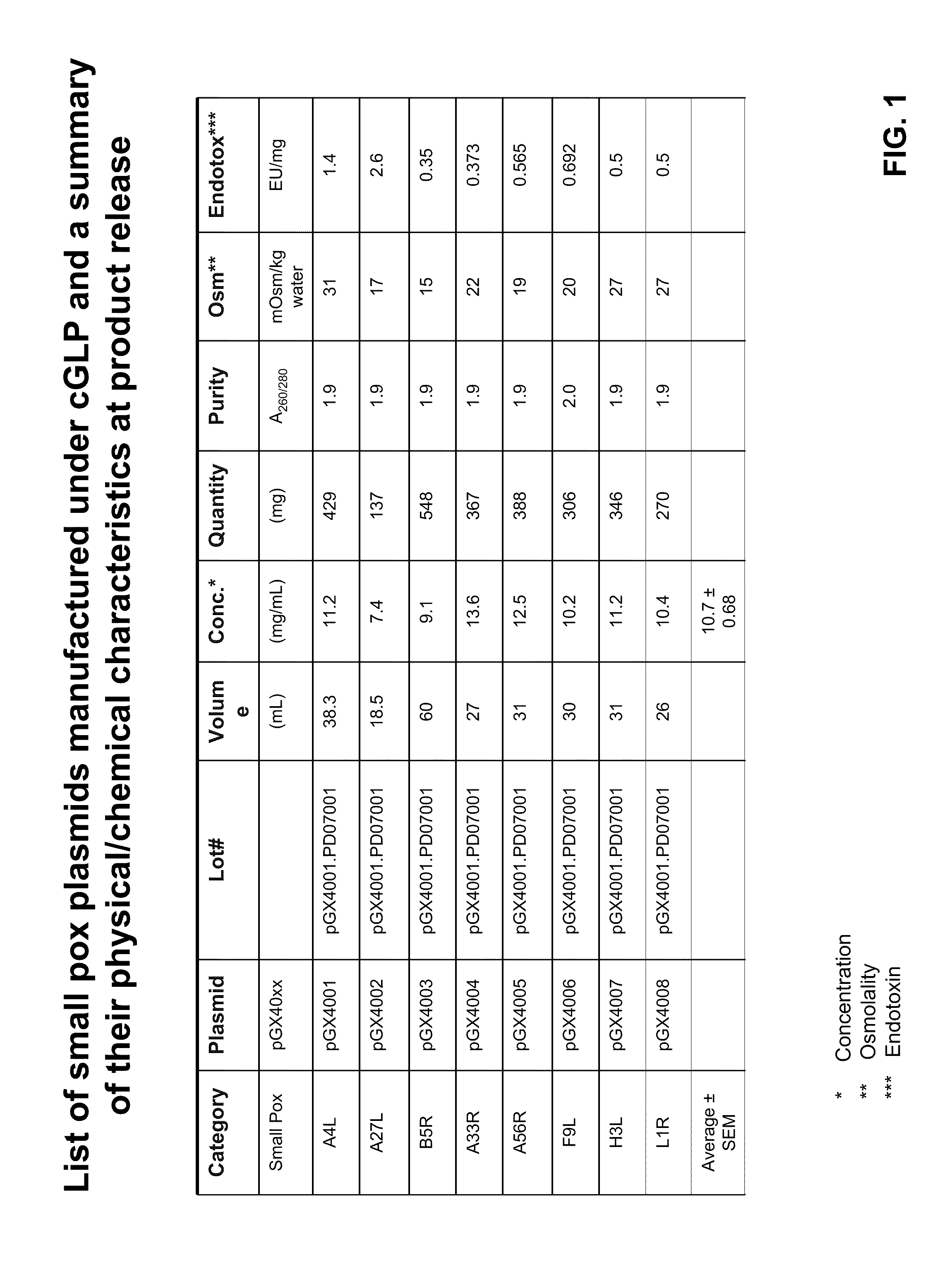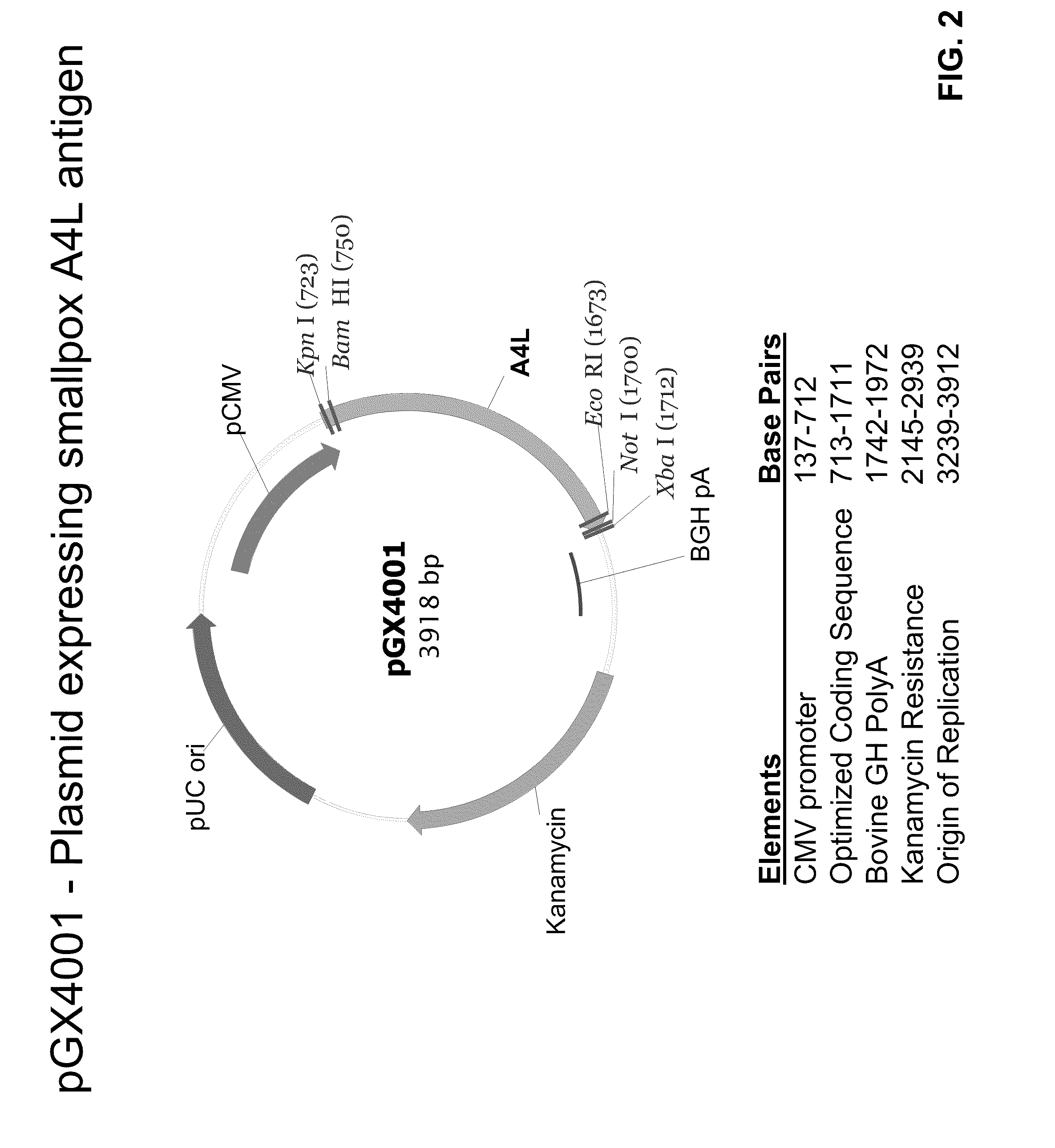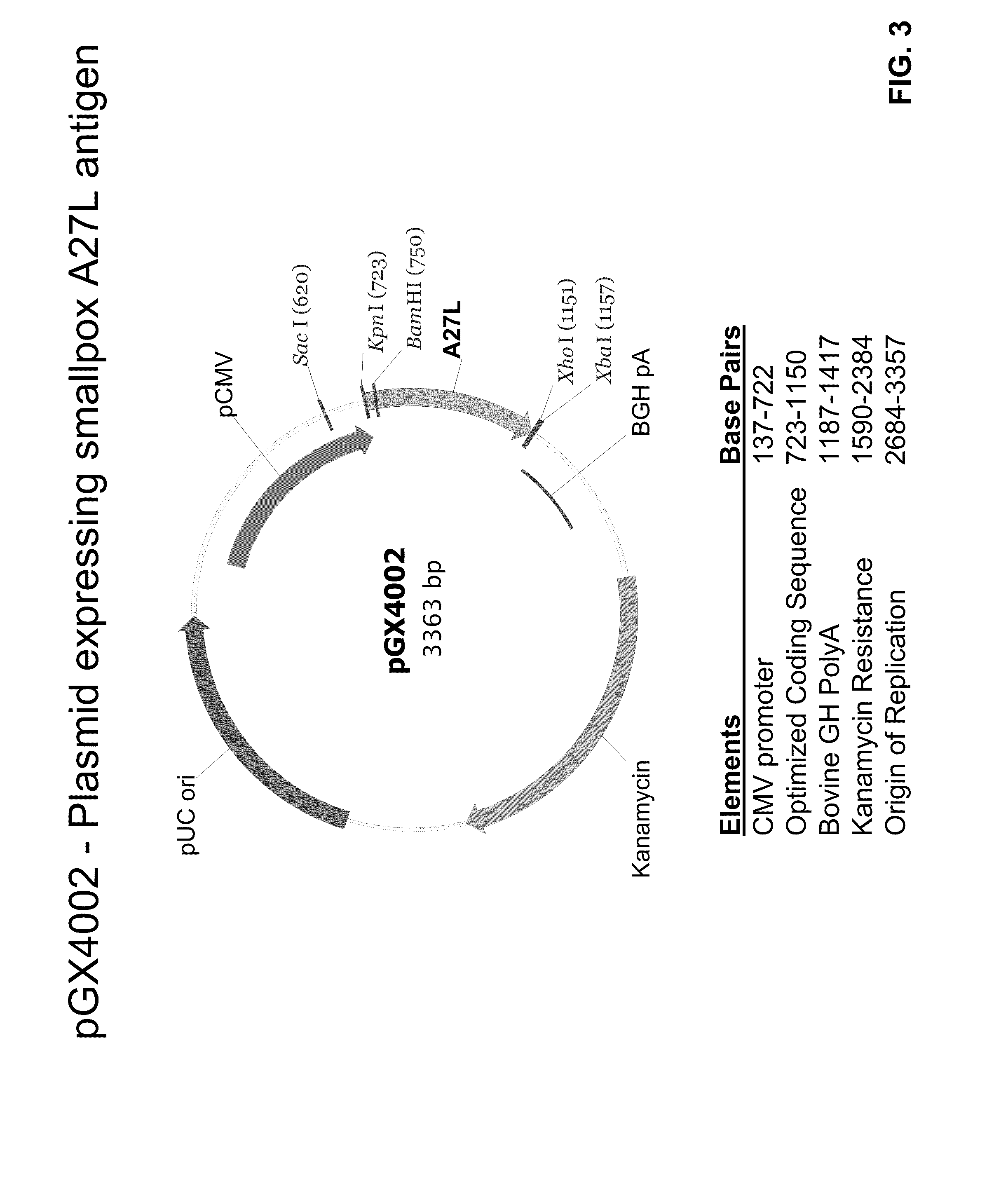Smallpox DNA vaccine and the antigens therein that elicit an immune response
a technology of dna vaccine and antigen, applied in the field of consensus smallpox antigen, can solve the problems of many u.s. populations at risk for infection, disease and death, and associated with severe adverse effects in humans, and achieve the effects of reducing the risk of dryvax, and reducing the risk of infection
- Summary
- Abstract
- Description
- Claims
- Application Information
AI Technical Summary
Benefits of technology
Problems solved by technology
Method used
Image
Examples
example 1
Cloning, In Vitro Expression and Manufacturing of Plasmids Expressing Smallpox Antigens
[0106]Each gene was synthetically-constructed and prepared by GeneArt Inc. (Toronto, ON) from oligonucleotides. The oligonucleotides were codon-optimized from the Vaccinia Virus Western Reserve (WR) strain and cloned into pVAX1 (Invitrogen, Carlsbad, Calif.) using standard cloning methods. The DNA vaccine plasmids, pGX4001 and pGX4003, encoding the optimized genes for A4L and B5R, respectively, were prepared by cloning the synthetically-constructed fragment into the HindIII and XhoI restriction sites. pGX4004 (encoding A33R) and pGX4005 (encoding A56R) were prepared by cloning the DNA fragment into the Hind III and XbaI restriction sites. pGX4007 and pGX4008 were prepared by cloning the DNA fragment encoding H3L and L1R, respectively, into the Hind III and BamHI restriction sites. For the plasmid encoding F9L (pGX4006) and A27L (pGX4002), the DNA fragment was cloned into the EcoRI / XbaI, and KpnI / X...
example 2
Plasmid Administration and Electroporation
[0112]A constant current electroporation device for ID application (CELLECTRA®, VGX Pharmaceuticals, Inc., Blue Bell, Pa.) was developed with micro-electrodes (mEP) mounted on a sterilizable, disposable plastic array, which is the only component that actually touches the skin of the patient (to prevent cross-contamination). The concentrated, high purity vaccine formulation in a small volume (volumes similar to that of classic vaccines, i.e., between 50 and 300 μL, and more preferably between 50-100 μL or 100-200 μL) is delivered to the selected area, the target area, and then the target area is surrounded by the micro-array. The micro-electrodes are inserted into the skin. The plastic array creates a uniform pressure around the micro-electrodes inserted into the skin, which helps to generate a uniform electric field during the EP process in the target area.
example 3
Immunization of Rabbits with Smallpox-expressing Constructs
[0113]In a pilot experiment, immune responses to smallpox antigens delivered by the plasmid vaccines of Example 1, above, and in vivo constant current electroporation were analyzed in groups of rabbits (n=3 / group) (see timeline, FIG. 10). Rabbits were fed food and water ad libitu and housed according to IUCUC standards and practices at Stillmeadow, Inc. (Sugarland, Tex.). Prior to the DNA vaccine administration, the injection site was shaved and thoroughly cleaned to remove excess hair and debris. On the day of DNA vaccination, rabbits were weighed, anaesthetized with ketamine / xylazine, and bled, and maintained on isoflourane (2%) for the duration of the treatment.
[0114]The plasmids were administered via a single intramuscular (IM) injection of 800 μg (100 μg each antigen and / or empty vector up to 800 μg per injection) in the following combinations: Group 1 rabbits were immunized with a combination of eight plasmids expressi...
PUM
| Property | Measurement | Unit |
|---|---|---|
| current | aaaaa | aaaaa |
| concentration | aaaaa | aaaaa |
| concentration | aaaaa | aaaaa |
Abstract
Description
Claims
Application Information
 Login to View More
Login to View More - R&D
- Intellectual Property
- Life Sciences
- Materials
- Tech Scout
- Unparalleled Data Quality
- Higher Quality Content
- 60% Fewer Hallucinations
Browse by: Latest US Patents, China's latest patents, Technical Efficacy Thesaurus, Application Domain, Technology Topic, Popular Technical Reports.
© 2025 PatSnap. All rights reserved.Legal|Privacy policy|Modern Slavery Act Transparency Statement|Sitemap|About US| Contact US: help@patsnap.com



